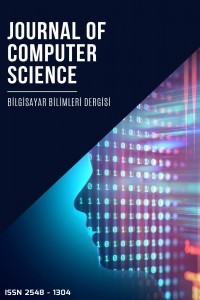Tarımsal İmge Dokularından HOG Algoritması ile Öznitelik Çıkarımı ve Öznitelik Tabanlı Toprak Neminin Tahmini
Toprak Nemi Tahmini; İmge İşleme; Sınıflandırma; MLP; k-NN; HOG
The Texture Feature Extraction of Agricultural Field Images by HOG Algorithms and Soil Moisture Estimation based on the Texture Features
___
- [1] H. S. Srivastava, P. Patel, Y. Sharma, et R. R. Navalgund, “Large-area soil moisture estimation using multi-incidenceangle RADARSAT-1 SAR data “, Geosci. Remote Sens. IEEE Trans. On, vol. 47, no 8, p. 2528 2535, 2009.
- [2] M. Zribi, A. Chahbi, M. Shabou, Z. Lili-Chabaane, B. Duchemin, N. Baghdadi, R. Amri, et A. Chehbouni, ”Soil surface moisture estimation over a semi-arid region using ENVISAT ASAR radar data for soil evaporation evaluation.”, Hydrol. Earth Syst. Sci., vol. 15, no 1, 2011.
- [3] N. Baghdadi, S. Gaultier, et C. King, “Retrieving surface roughness and soil moisture from SAR data using neural networks.”, in Retrieval of Bio-and Geo-Physical Parameters from SAR Data for Land Applications, 2002, vol. 475, p. 315 319.
- [4] El-Hajj, M.; Baghdadi, N.; Belaud, G.; Zribi, M.; Cheviron, B.; Courault, D.; Charron, F. "Soil moisture retrieval over grassland using X-band SAR data", Geoscience and Remote Sensing Symposium (IGARSS), 2014 IEEE International, On page(s): 3638 – 3641.
- [5] Buttrey, S. and Karo, C.2001. Using k-nearest-neighbor classification in the leaves of a tree. Computational Statistics & Data Analysis, 40 (2002) 27-37.
- [6] Li, X., Nie, P., Jun,Z. and He, Y. 2011.Using wavelet transform and multi-class least square support vector machine in multi-spectral imaging classification of Chinese famous tea. Expert Systems with Applications 38(9):11149-11159.
- [7] N. Dalal and B. Triggs "Histograms of oriented gradients for human detection", Proc. IEEE Computer Soc. Conf. Comput. Vis. Pattern Recognit., pp.886 -893 2005.
- [8] R. Kadota and H. Sugano "Hardware architecture for HOG feature extraction", Proc. 5th Int. Conf. Intell. Inf. Hiding Multimedia Signal, pp.1330 -1333 2009
- [9] O. Ludwig, D. Delgado, V. Goncalves, and U. Nunes, 'Trainable Classifier-Fusion Schemes: An Application To Pedestrian Detection,' In: 12th International IEEE Conference On Intelligent Transportation Systems, 2009, St. Louis, 2009. V. 1. P. 432-437.
- [10] Acar, E. and Özerdem, M.S., “Image Classification of Kiziltepe cropland by using Gabor Wavelet Transform”, 20th Signal Processing and Communications Applications Conference (SIU), On page(s): 1 – 4, Muğla, 2012.
- ISSN: 2548-1304
- Yayın Aralığı: Yılda 2 Sayı
- Başlangıç: 2016
- Yayıncı: Ali KARCI
Emrullah ACAR, Mehmet Siraç ÖZERDEM
Otomatik Ve İnteraktif Bölütleme Yöntemlerinin Karşılaştırılması
Serdar Alasu, Muhammed Fatih Talu
A Note on Fractional Order Derivatives on Periodic Signals According to Fourier Series Expansion
Barış Baykant Alagöz, Mehmet Emin Tağluk
Design of a Resource Management for GPGPU Supported Grid Computing
Embedding Hierarchical Fibonacci Cubes In Faulty Hierarchic Cubic Networks
